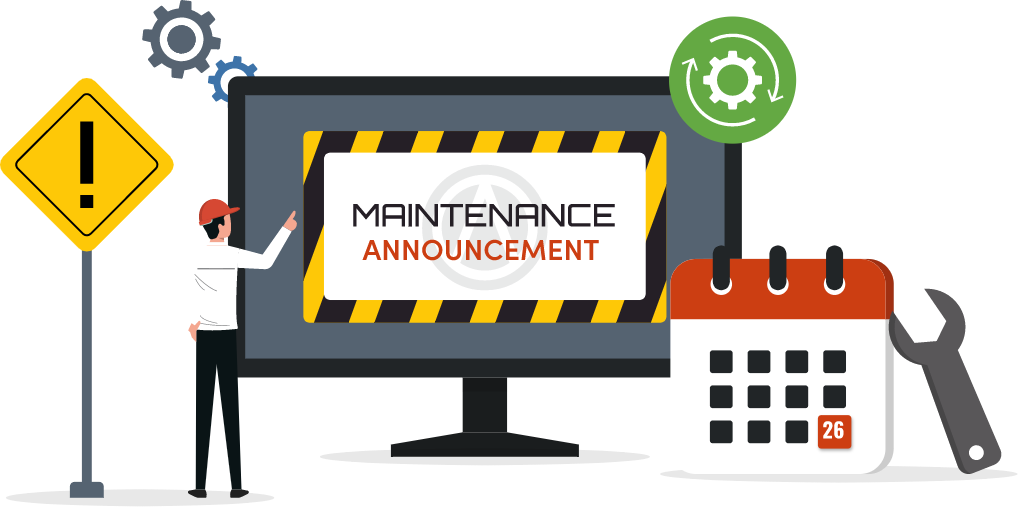What key metrics should I track to measure inventory performance?
Important metrics include Cost of Goods Sold (COGS), inventory turnover rate, and variance percentage. These indicators reveal how efficiently ingredients are used and help identify waste, theft, or ordering problems.
How to Build a Restaurant Inventory Management Process from Scratch
Overview
Opening a restaurant is exciting, but keeping track of every ingredient, supply, and cost can quickly feel overwhelming. Food costs alone typically account for 28% to 35% of total sales, making inventory one of the largest and most unpredictable expenses. Without a clear process, it's easy to over-order, misplace items, or let products spoil - each mistake quietly cutting into profits.
A well-planned inventory management process brings order to this chaos. It provides a step-by-step system for knowing exactly what you have on hand, when to reorder, and how much to spend. The result is less waste, more accurate budgeting, and smoother daily operations. Even if you're starting from scratch with no prior experience, you can build a system that works. By following a structured approach - setting goals, choosing the right tools, and training your team - you'll create a foundation that keeps costs under control and supports consistent service.
Define Your Inventory Goals and Metrics

Before you start counting boxes or entering numbers into a spreadsheet, it's critical to know what success looks like for your restaurant's inventory management. Clear goals and measurable metrics give you a road-map for decision-making and help you track progress over time. Without them, you're essentially operating in the dark, reacting to problems instead of preventing them.
Begin by identifying your primary objectives. For most restaurants, the top priorities are controlling food costs, reducing waste, and maintaining consistent product availability. Each of these goals ties directly to your bottom line. Food costs typically represent 2835% of sales, so even a small 2% reduction in waste can translate to thousands of dollars saved each year. If you operate a bar or beverage program, beverage cost percentages - often between 18-24% - should also be part of your focus.
Once you've set your goals, choose key performance indicators (KPIs) to measure progress. Common metrics include -
1. Cost of Goods Sold (COGS) - Tracks the total cost of ingredients and supplies sold within a period.
2. Inventory Turnover Rate - Indicates how quickly inventory is used and replaced. A higher turnover often means fresher products and less waste.
3. Variance Percentage - Compares recorded inventory to actual usage to reveal shrinkage, theft, or counting errors.
Set benchmark targets for each KPI based on your restaurant type. For example, a quick-service restaurant might aim for an inventory turnover of 4-6 times per month, while a fine-dining venue might operate at 2-4 times. Tracking these numbers weekly or monthly provides early warnings of rising costs or operational issues, allowing you to make timely adjustments and keep your inventory process on track.
Transform Your Restaurant Operations Now!
Effortless Inventory Tracking with Altametrics!
Categorize and Standardize
With your goals and metrics in place, the next step is to organize your inventory so it's easy to track, count, and manage. A well-structured inventory list reduces confusion, speeds up counting, and ensures everyone on your team uses the same language when referring to items. Disorganization, on the other hand, leads to duplicated orders, missed products, and inaccurate data that can drive costs higher.
Start by grouping items into logical categories. Most restaurants benefit from breaking inventory into main groups such as food, beverages, paper goods, cleaning supplies, and small wares. Within these, you can create subcategories for more detail - like separating proteins, produce, and dry goods under food. This structure helps staff quickly locate items and ensures counts are performed consistently across shifts.
Next, establish standardized naming conventions and units of measure. For example, decide whether you'll count tomatoes by the pound, case, or individual piece - and stick with it. Using mixed units creates confusion when calculating usage or placing orders. Assigning SKU numbers or PLUs (price look-up codes) to each item provides an extra layer of clarity and makes it easier to integrate with POS or inventory software.
Keep the list clean by avoiding duplicate names (e.g., "whole milk" vs. "milk, whole"). A single, accurate description prevents counting the same item twice. As a final step, create a master inventory sheet that lists every category, item name, unit of measure, and supplier. This sheet will serve as the foundation for your counting process and can be updated as your menu or supplier relationships change. By taking time to categorize and standardize now, you'll save hours of frustration and costly mistakes later.
Choose the Right Tools and Software
Once your inventory is categorized and standardized, it's time to decide how you'll track and maintain the data. The tools you choose can make or break the efficiency of your inventory management process. While some small restaurants start with paper logs or spreadsheets, these methods can quickly become time-consuming and prone to errors as your operation grows. Selecting the right technology early sets you up for accuracy, speed, and scalability.
Begin by weighing the pros and cons of manual tracking versus digital systems. Spreadsheets are inexpensive and familiar, but they require constant manual updates and leave room for mistakes - especially when multiple team members are involved. In contrast, dedicated inventory management software or POS-integrated systems can automatically update stock levels as sales occur, reducing the need for double-entry and cutting down on human error. According to recent restaurant technology surveys, operators using digital inventory tools report saving two to four hours per week on counts and ordering tasks compared to manual methods.
When evaluating software, focus on features that directly impact efficiency. Look for real-time tracking, mobile device compatibility for on-the-floor counts, supplier integrations for direct ordering, and reporting dashboards that highlight usage trends and variances. Cloud-based platforms are particularly valuable because they allow access from any location and provide automatic backups, protecting your data from accidental loss.
Budget is an important consideration, but avoid choosing solely on price. The right system should align with your restaurant's size, menu complexity, and future growth plans. A reliable digital tool not only streamlines daily operations but also provides the accurate data you need to make smarter purchasing decisions and maintain tight cost control.
Establish Count Schedules and Procedures

With your tools in place, the next critical step is to create a consistent schedule and method for counting inventory. Even the best software can't deliver accurate data if the numbers being entered are incomplete or outdated. A well-defined routine keeps your inventory records current, reveals trends early, and prevents costly surprises like unexpected stock-outs or hidden waste.
Start by setting a regular counting cadence that fits your restaurant's size and menu complexity. Many operators perform a full inventory count once per week, typically on the same day and at the same time to ensure consistency. High-cost or fast-moving items - such as proteins, alcohol, or specialty ingredients - may require more frequent spot checks, sometimes daily. The key is to maintain a rhythm that balances accuracy with staff workload.
Next, outline a clear step-by-step procedure for staff to follow during each count. Assign specific team members to defined areas of the restaurant (e.g., walk-in cooler, dry storage, bar) and provide them with the latest master inventory sheet or digital checklist. Counts should always be performed before new deliveries arrive and after service hours, when shelves are fully stocked but not actively in use. This eliminates confusion about which items have been sold or received during the process.
To minimize errors, implement practices like double-checking high-value items or using two-person teams for critical categories. Encourage staff to record any discrepancies immediately and to note damaged or expired goods separately. By locking in a reliable schedule and a standardized procedure, you'll generate clean, consistent data - giving you the insight needed to forecast demand, place accurate orders, and maintain a healthy bottom line.
Establish Count Schedules and Procedures
Creating a reliable counting routine is essential for keeping your inventory accurate and your food costs under control. Here's a numbered breakdown of the key steps to follow -
1. Set a Consistent Counting Schedule
Decide how often to perform full inventory counts. Many restaurants choose a weekly count, often after closing on Sunday night or before opening on Monday morning when inventory levels are lowest. High-value or perishable items like proteins, dairy, and alcohol may need daily spot checks to prevent shrinkage and spoilage. Consistency in timing ensures comparable results week after week.
2. Assign Clear Roles and Responsibilities
Designate specific team members to handle counts and make sure each person understands their duties. Ideally, two employees should work together - one to call out item names and quantities, and another to record the numbers. This dual process reduces errors and discourages theft or misreporting.
3. Provide Detailed Counting Instructions
Create written procedures that explain how to measure open packages, count partial cases, and handle items stored in different locations. Ensure staff use the same units of measure listed on your master inventory sheet to avoid conversion mistakes.
4. Control the Counting Environment
Always count before receiving new deliveries and confirm that all items are in their proper storage areas. This prevents confusion and ensures that only current stock is captured.
By following these four steps, you'll maintain accurate data, make smarter ordering decisions, and build a routine that keeps your inventory management process running smoothly.
Implement Ordering and Replenishment Rules
Once your counting schedule is in place, the next step is to create a systematic ordering process that keeps your shelves stocked without tying up unnecessary cash. Clear rules for replenishment help you avoid costly problems like running out of key ingredients during a dinner rush or over-ordering items that end up spoiling in storage.
1. Set Par Levels
A par level is the minimum amount of each item you need on hand to operate smoothly until the next delivery. To determine it, review historical sales data, consider vendor lead times, and factor in safety stock for unexpected spikes in demand. For example, if you sell 40 pounds of chicken per day, receive deliveries every three days, and keep a 10% buffer, your par might be about 132 pounds (40 x 3 x 1.1).
2. Establish Reorder Points
A reorder point tells you when it's time to place a new order. This is typically slightly above the par level to account for delivery delays or sudden demand increases. Using real-time inventory software can automate reorder alerts, ensuring you never miss a critical restock.
3. Coordinate with Suppliers
Maintain open communication with vendors about lead times, delivery windows, and seasonal price fluctuations. Reliable supplier relationships allow you to adjust orders quickly and negotiate better terms when needed.
4. Monitor and Adjust Regularly
Review your par levels and reorder points monthly to reflect menu changes, seasonal trends, or shifts in customer traffic. Updating these numbers ensures your replenishment system stays aligned with actual business needs.
By implementing these rules, you'll strike the right balance between availability and cost control, keeping your kitchen prepared while avoiding excess inventory and wasted dollars.
Train and Empower Your Team
Even the best-designed inventory management process will fail if your staff isn't properly trained to execute it. Your team is on the front line of counting, ordering, and tracking, so giving them the right skills and motivation is critical for long-term success. Proper training not only improves accuracy but also creates a culture of accountability where every employee understands how their actions affect food costs and profitability.
Begin by teaching staff accurate counting techniques. Show them how to measure open packages, weigh items when needed, and record counts using the units of measure defined on your master inventory sheet. Consistency is key - if one person counts chicken breasts by the case while another counts by the pound, your data will never be reliable.
Next, train team members on the tools and software you've chosen. Whether you're using spreadsheets or a cloud-based inventory platform, provide hands-on demonstrations so employees are comfortable entering data, running reports, and double-checking their work. Role-play common scenarios, such as handling deliveries or spotting discrepancies, to build confidence and reinforce best practices.
Finally, empower your team by explaining the bigger picture. Share how accurate inventory reduces waste, keeps menu prices stable, and protects jobs by maintaining profitability. Recognizing the connection between careful counting and business success encourages staff to take ownership of the process and perform with greater care.
Ready to simplify inventory management and give your team the tools they need to succeed? Altametrics offers easy-to-use inventory software that streamlines counting, automates ordering, and provides real-time insights to keep costs under control. Explore Altametrics today and start building a smarter, more efficient restaurant inventory process by clicking "Schedule a Demo" below.



































































































































































































































































